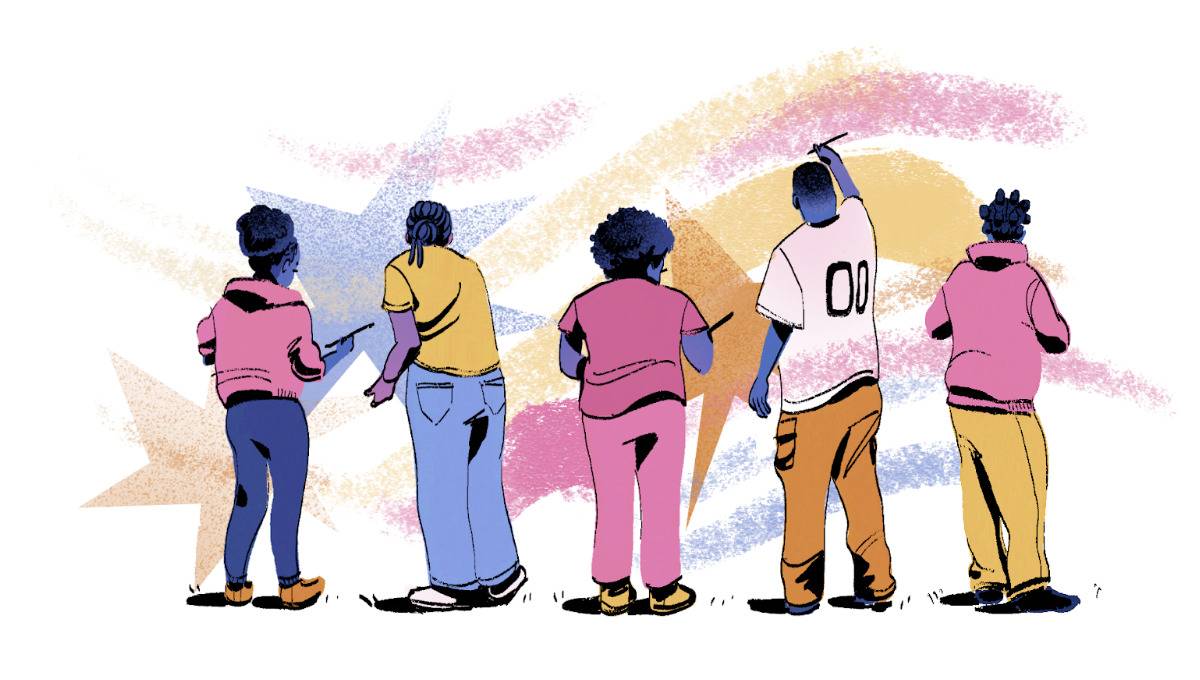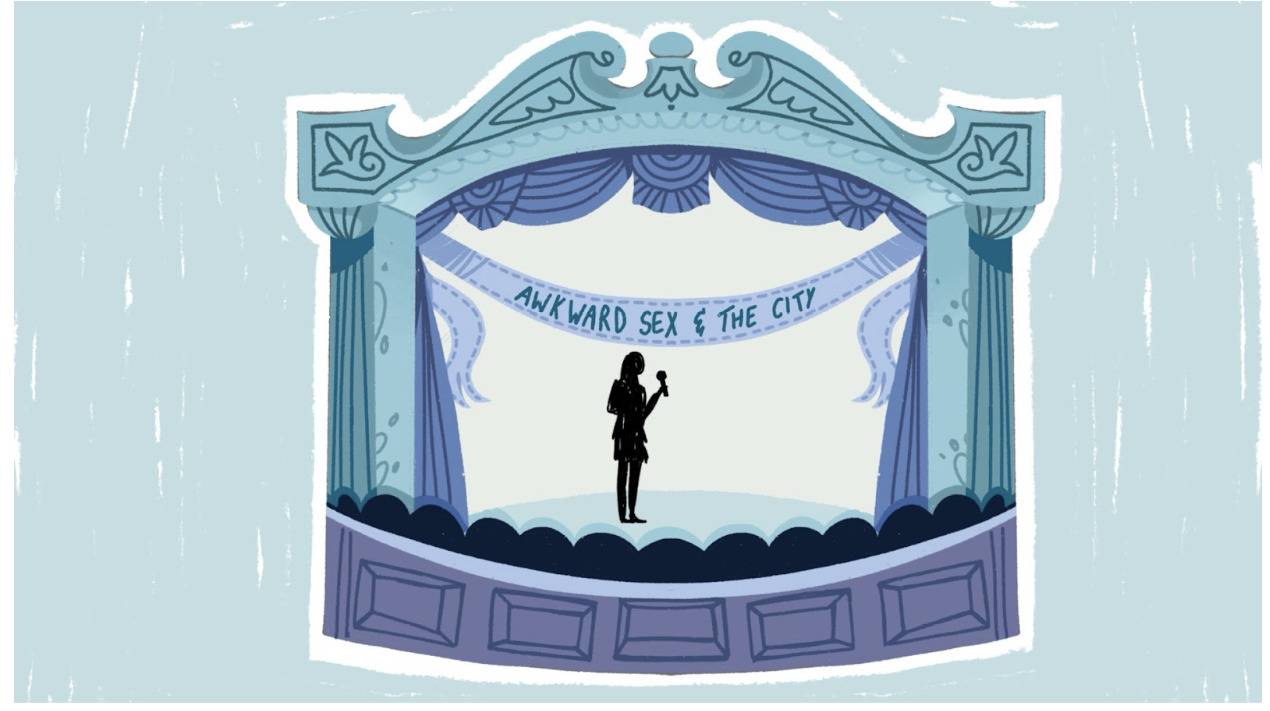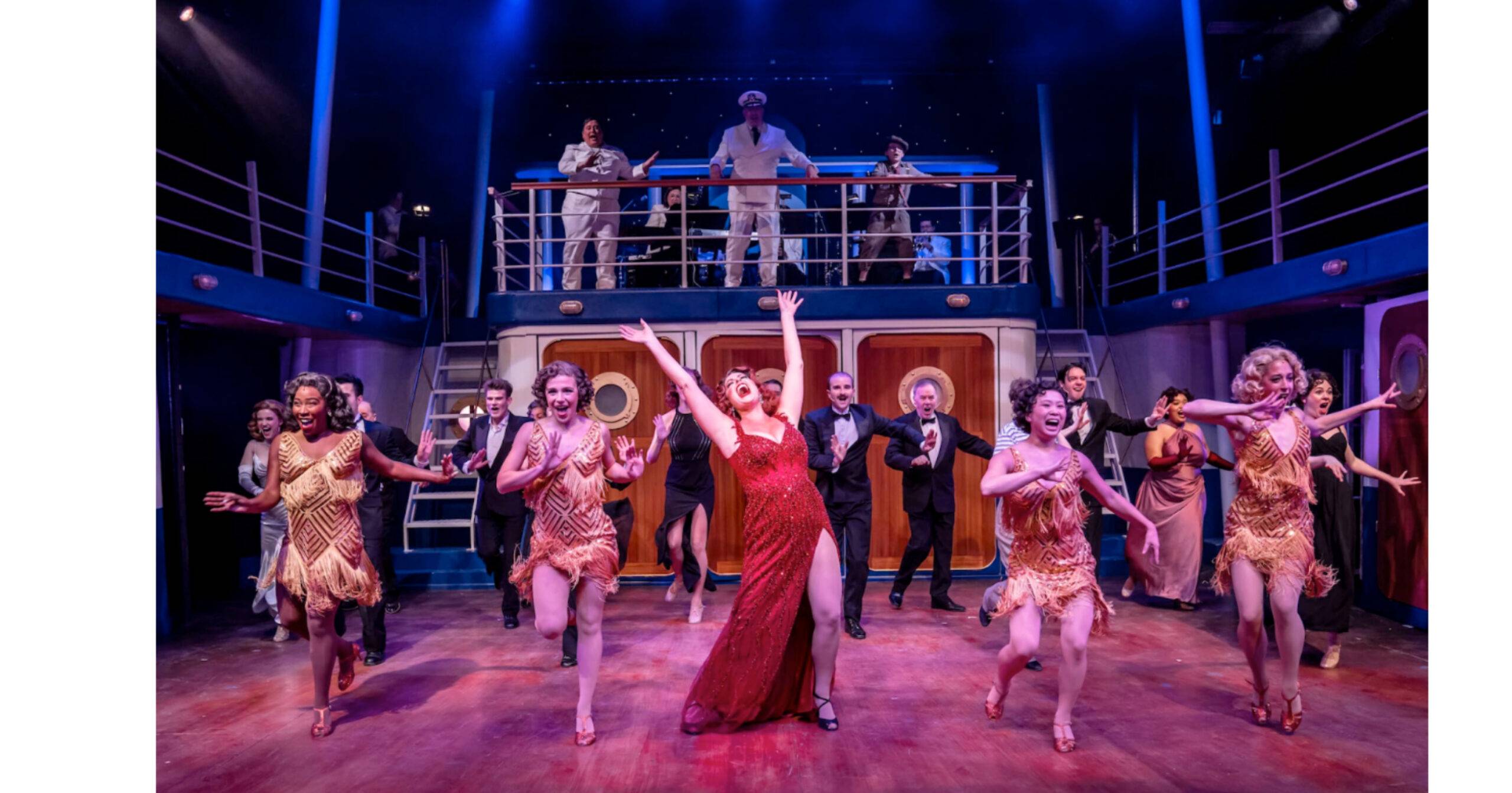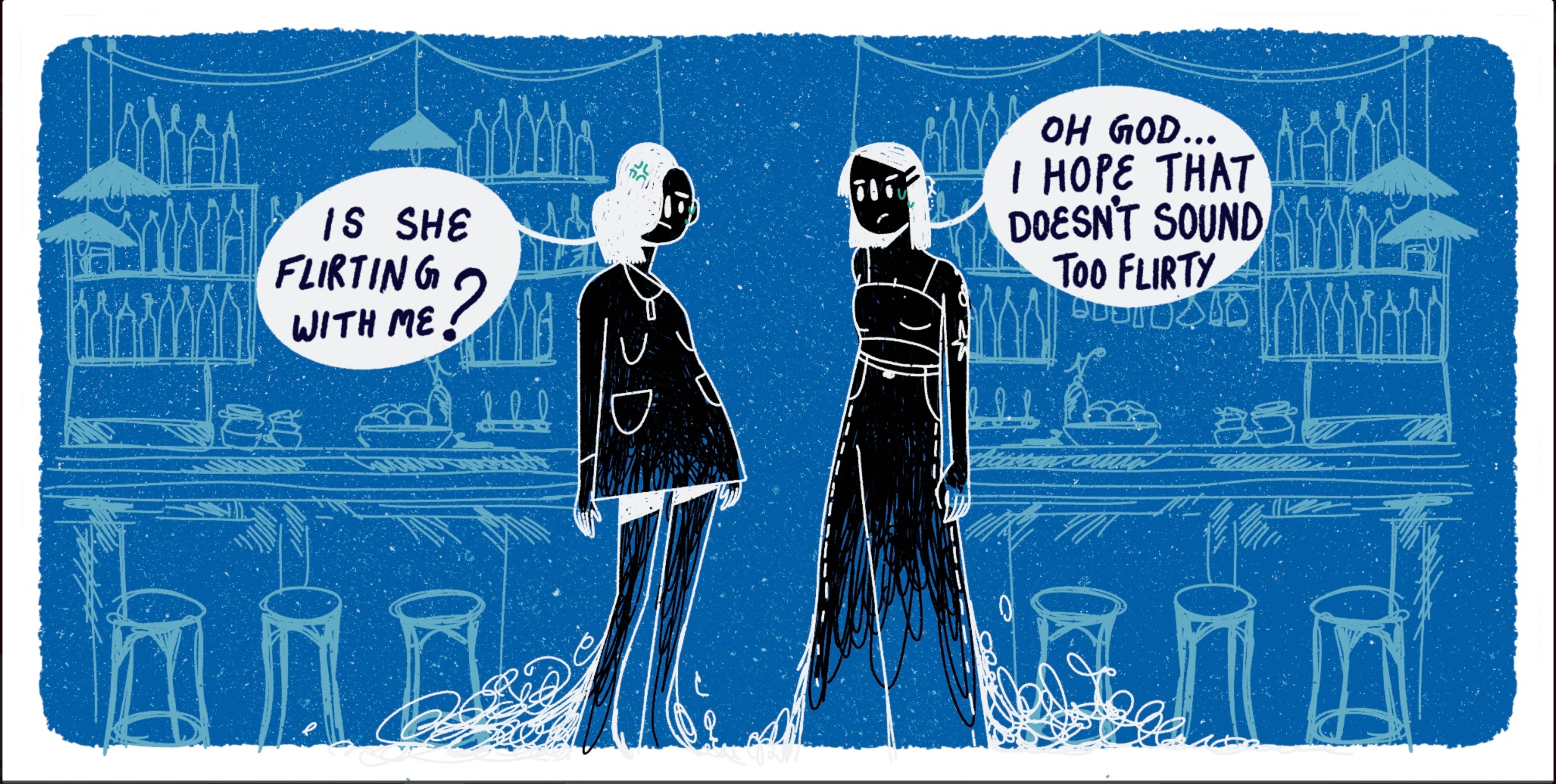If you stumbled onto The Visualist to figure out what art events were coming up, you might think that was the website’s only purpose. But the event calendar’s current publishers, artists Michael Thomas and Meg Duguid, who is also Director of Exhibitions at Columbia College Chicago, conceive of it primarily as an archive of the Chicago arts community. I spoke with Meg and Michael about The Visualist’s possible futures.
Leah Gallant: How did you come to start publishing The Visualist?
Meg Duguid: We came into the publishing realm with an eye toward the need for an archive. In 2015, Steve Ruiz was the last one standing running it, and he had gotten married and lived in England. At that point we were talking about what Chicago needed in terms of general support, the really nerdy needs. We thought that it needed an archive, as well as things like health insurance and a credit union, but at that point Steve was leaving The Visualist, so we took it over. It acts as an archive of events, and we are actively backfilling the archive. We have partnerships with Bad at Sports and Sixty Inches from Center — we manage the whole top five for Bad at Sports, and we manage the art picks for Sixty Inches from Center. It’s a way to grow audiences symbiotically.
Michael Thomas: We see that sort of symbiosis as really important. It’s really important for organizations to not hang up on one another, but to work in concert. We don’t want to take over what you’re doing, but we want to help you out as much as possible, we want to extend the life of your project as far as we can.
LG: That’s interesting, because I hadn’t realized the extent to which you’re working intentionally with other publications. I’m thinking about bridging this division of labor as one way of making art publishing more sustainable. Do you know of other publications that have a partnership with something like the Visualist?
MD: Not really. There’s Artcards, an art events listings website located in New York and some other cities. But there’s nothing sexy about event listings. If it were super sexy, all the newspapers would still do it.
MT: There’s no fun in it. It’s a lot of work, and it’s inherently a back office sort of thing to do, so it’s not well-suited to the way artists want to present or be seen. It’s really hard to be the flashy voice behind the guy who makes event listings happen. “Oh, and by the way, I’m a sculptor on the side.” See? You can’t really insert yourself in the same way that you could by, say, running a gallery. There’s not the same level or schmooze or opportunity to meet people. And we’ve gone a long way since taking over The Visualist to remove ourselves as personalities from the public eye, we don’t want to be seen as trying to cash in or create any kind of capital doing this. The project is the important thing, and we want to make sure that should we ever get tired of it, someone actually has room to step in and take over.
MD: We just got our not-for-profit status for culture/Math, which The Visualist is a part of. We’ve been in Chicago and the world long enough to watch the ebb and flow of not-for-profits, and we know how hard the transition between executive directors is. I feel like every collaborative project inherently says, “We want to be a collaborative project that can be passed on from hand to hand,” and it’s very difficult to do that in practice, but we’re going to try. I don’t think it will be anytime soon, but eventually there might come a time when we don’t run this.
MT: We also see The Visualist as being one of a couple different tent poles underneath culture/Math, the larger nonprofit. The Visualist is an active archiving construct that we’re putting together, and it will have additional functions later on. One of these is working with artists to ensure that their archives are held safely in temporary storage in the event of a catastrophe — like, what happens to all an artist’s stuff should they pass away suddenly? There’s a huge need for keeping work safe so that it passes into a historical record rather than the landfill. This is important regardless of whether an artist is viewed as being important at the time of their demise. We would like to move in this direction, but it’s about a fifty-year plan.
We would also like to start an artist credit union, and potentially — and this is further down the road — look at other publications, and make the archives we’ve amassed available on a more public level. They would be repackaged in such a way that they could either be made available through forms like catalogues, phone books, magazines, or long-playing records that the kids love. We think all of these things are necessary to keep a community engaged in its own geography and in its own space. We’ve been in Chicago on and off, but we’ve been here long enough to see our community, that we kind of grew up with, leave Chicago and become engaged in other communities on one coast or another. They instantly become New Yorkers or Los Angelenos. And they kind of fall off from the Chicago map, they no longer hold onto that. And it makes it that much harder for this community to hold onto its history.
LG: What role does The Visualist play as a way of getting people out to events? Have you seen changes or shifts in turnout or audience since you took over in 2015?
MD: The interesting thing is, we had a child in 2015, so we don’t go to that many events anymore! So it’s hard to tell, but we do know our numbers have gone up. We used to get 4,000-6,000 unique hits a month, and now we’re at between 8,000 and 10,000 unique hits a month. So we know that it’s made an impact in terms of its regular usage, and the growth is so steady and consistent that we believe people are coming back at least once a week. Even the flow chart in a week is so crazily consistent, with Monday, Tuesday, and Wednesday being lower days, and Thursday, Friday, and Saturday being higher days. It drops back down on Sunday. It’s kind of wackily consistent traffic.
MT: And we’re also seeing a steady rise in the individuals that are paying attention to Facebook, and we’ve only kind of recently started paying attention to our Instagram account and Twitter account. We’ll never win at social media, but we’ve seen growth in everywhere we’ve managed to stretch out and spend some time.
LG: I will also not be winning at the internet. But I was thinking about The Visualist in relationship to social media. The main reason I haven’t deleted my Facebook is so that I can check events, but I’ve been checking it less and less in Chicago because I check The Visualist more and more, which makes me less reliant on Facebook. Have you considered using The Visualist to encourage people to leave Big Tech and build community networks on independent and local online platforms?
MD: The problem is that if everyone leaves Facebook, where are we going to find our events that people don’t submit? No, we would love that, we ourselves would really love to leave Facebook, but we can’t because of The Visualist, and that makes us sad.
LG: What is the process of getting a listing online? You said you do a lot of contacting people, adding listings yourselves, and combing through Facebook?
MD: We do a ton of combing through Facebook. There is a fully open submit button that anyone can use. Lots of people do it, larger places like the DePaul Art Museum or Gallery 400 or even the Museum of Contemporary Art or the Poetry Foundation. You always know when their interns switch because suddenly all the events will be in it because that person knew about us, and then three months later they will no longer be entering events. That’s probably an extra chunk of unpaid labor going into The Visualist that we can’t quantify.
MT: It’s telling that the institution doesn’t know about us, but the interns who are working for free do.
MT: One of the ongoing projects since we took over is to get us off WordPress. WordPress is a cantankerous platform at best. We didn’t design it and we’re not programmers, so for us it’s a constant nest of bees and burrs. We’re constantly in a panic mode that we’re going to be overstaying our welcome and blooming our memory past our hosting service, and it feels like we’re constantly getting hacked or broken in some way that we’re never able to work out ourselves.
MD: We pay someone else to do that. We pay a security service because we got hacked so badly a few years ago that our whole site went down for a weekend.
MT: So, since we’ve started we’ve been working towards developing a new site that would be able to house and host all the things that we want to, like, say, twenty-odd years of Chicago events. But perhaps some other things as well. For example, there’s not really a standing place to access obituaries for artists, and finding people who can put together obituaries that discuss what artists have done, and things like that.
MD: Recently a couple people have passed away that don’t have proper obituaries. Bill Talsma, Mary Ellen Croteau, and John Cook all made significant contributions to the Chicago as well as national art scene, but probably no one younger than me knows who any of them. So the other thing that The Visualist seeks to address is getting the actual continuum of Chicago history up. That is a feat. But we’ve also seen enough comings and goings to realize that the history gets erased approximately in eight year increments, then there’s a new set of folks. We recently were able to get access to all of the Chicago Artist Coalition’s newsletters from 1977 to 2004, and that was where people would list their events for a really long time. For me, because I came here in late 1995 for my first round of living in Chicago, that was really humbling, because I had some opinions about what was going on at that point, and I don’t think I realized the sweat equity, the labor, and the real care and attention that many of these people had given Chicago over the long term. There weren’t a lot of ways to access it, nor did there seem to be a lot of conversation around it.
LG: So it serves as a trace of artists’ presences.
MD: You can’t get erased if you’re in an archive. Michael recently sent me these two articles that Alan Artner, the former art critic of the Chicago Tribune, wrote. One was about a Frida Kahlo retrospective, and one about about Joy Poe’s rape performance at Artemisia. Alan Artner was a real sexist bastard: in the middle of his review of Joy Poe’s show, he complains that there’s no room for him in it. So when you’re relying on the Tribune as an archive, much like Wikipedia and everything else, it hits the same tropes. But if you can go back to the prime source material of a press release or an event or an exhibition card, you can start building a different set of histories.
MT: There seems to be a fair amount of mistrust about what it is we’re trying to do with it — there’s not an understanding that we’re building an archive, and that we’re not looking to sell anything or to profit from anything.
MD: Honestly, some communities in Chicago, and I mean that in all sorts of ways, have been overlooked and rejected so many times that you’re like, “I get it. I can totally understand why you don’t want to hand me that information. We will be here if you’re ever ready.” And who knows, we might build a terrible project in the end. There should be room for that. We might really eff it up.
MT: It might crash and burn, and then hopefully, from its ashes, someone can figure out what went wrong and try it again. But we’ve seen things like that happen over and over again in Chicago. The gallery situation as it stands with young DIY spaces is a testament to how that evolution has happened time and time again since the turn of the last century.
MD: In terms of funding, The Visualist is sort of not fundable. I’m going to be really honest. It’s not not fundable, and we may be able to pull off a salary out of the Visualist eventually, but that’s really questionable given the state of not-for-profit funding. Sponsored posts are at odds with what we’re doing, because we don’t want to show the cream that has risen to the top of the bucket: We want to be the bucket. In the not-for-profit model, our money is going to need to come from a credit union, our salaries are going to need to come from a larger set of services that each can slough off $10,000 here or there to put towards them. It needs to be diversified or it will eventually implode. There are probably times where we can work on projects or get a big project grant, and maybe hire more people on, or move someone’s time over to a project, but it’s going to have to be as nimble as the art world, because funding will dry up. We don’t live in Europe.
LG: You’ve been volunteering your time to run The Visualist. About how many hours a week would you say you spend?
MD: Probably on average, fifteen hours a week each, or 2-4 hours a day apiece. But there are also three more people who are helping us right now, in different capacities, to cull events. Nothing is sexier than data entry. Collectively, we probably roll about 60 hours a week between all of us. So like a position and a half.
We got a Propeller grant in our first year and we were able to bring on some interns. The Propeller Fund is immeasurably helpful in the city of Chicago. But now that we just got our not-for-profit status, we’re starting to look at what the menu of grants might look like, and how to creatively tap humanities grants as well, because there might be far more money in that. I’m planning our first fundraiser.
MT: Ice cream social. It’ll be on The Visualist.
LG: What would you do if you got a grant of $10,000, no strings attached, for The Visualist? What’s first on your list?
MD: We would hire our first staff member. It wouldn’t last very long, but we would use it to pay people, and use it to try to grow revenue streams. We have this thought that we collect events, and that could be really useful for other people, so if we can collect events from neighborhoods maybe we can partner with neighborhood newspapers, and for $50 a week or something, we can give them their events.
MT: I have a romantic notion that small newspapers are in a position to know neighborhoods better than the Tribune or the Sun-Times ever will, that they’re far more in line with the actual politics or the people who live in them. Being able to enlarge the importance that cultural events have in those neighborhoods is really important. When I was younger, the Chicago Reader was the go-to place for events. For indie spaces at the time, all you needed was a telephone number, a day of the week that you were open with your hours, an address, and some really basic information, and you could get listed along with Donald Young Gallery or Phyllis Kind Gallery, spaces that no longer exist but were really important to the Imagists and the larger arts community between the coasts.
MD: That leaves us having very few rules about who can post. We’re not going to tell you it’s not visual art, unless it’s so far out of the visual art realm, like the ESP conference that was submitted once.
MT: And the Chicago Reader was limited in its ability or its scope. It was difficult to find the Chicago Reader south of Roosevelt unless you were in Hyde Park, and it didn’t spread very far out of Hyde Park. It was very difficult to find it west of what’s now considered West Loop or Wicker Park. It had very specific neighborhoods that it would reach out into. With the project we’re pursuing, we want to be able to bring back some of that stuff and put it into the historical record. We want to see it being archived appropriately with things that were missed by the Reader, but we also want to see an engagement with those neighborhoods. The Reader is still really limited, and Newcity is also limited in its ability to reach very far south or very far west.
MD: The South Side Weekly does a much better job, Chicago Defender clearly does a much better job, and The Lawndale News does some interesting things. What we’re considering the mainstream is still white, white spaces and white neighborhoods, which also limits what art can be.
MT: So yeah, we’ve got this great submit button, and everybody should submit. It’s a non-curated site, it doesn’t cost anything
MD: It’s super easy to submit, it probably takes under ten minutes, I’d say five max. I have gotten emails from people who are really upset, they’re like, “I’ve submitted this event 5 times and it’s not up yet,” and I’m like, “Yes, that’s because our child was sick yesterday and I was not approving events.” We are live humans. The assumption is that it’s automatic. Another thing we do is make sure artists’ names are included. It’s amazing how many people leave their artists off. They’re like, “Come see the artwork of fifty artists, it’s amazing, and our beer sponsor is Marz Brewery.” I’m like, “Cool, I love Marz Brewery too, but who are your artists?” We really want to capture the artists and the curators and why they were there. Or the listing of a curator but not an artist — I will stop that stuff in a queue and email people. Come the day of the event, I just put the event up and let it go without it, except the fundraisers. If you won’t give me the artist list, I will not put it up.
MT: We hold that line.
MD: Until I’m tired and it’s 4 in the morning and then I’m like, “fine.”






















